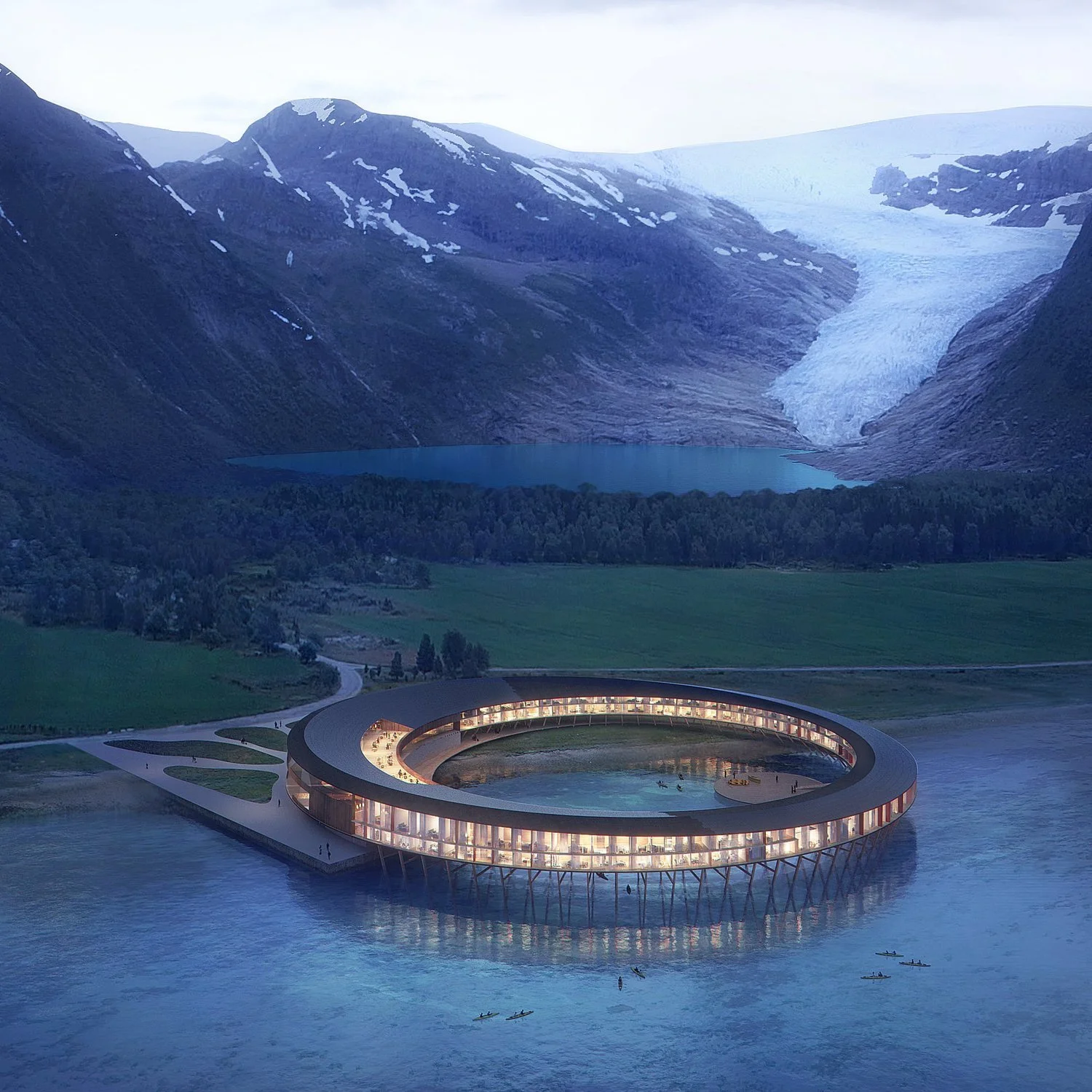Village Vacance
The concept of a vacation village has seen a number of forms over the years, with some intriguing news manifestations in recent years.
In countries around the world all-inclusive resorts can be found with the village nomenclature, the idea seemingly to establish a sense of place and communicate a collection of facilities that add up to something more than just a room with a view. The degree to which they manifest village tropes varies greatly.
In Italy the borgo has now blossomed into a collection of over 250 borghi spread across the country. These borgo are small Italian villages, or an assortment of old farm buildings grouped around a castle, which have been converted into holiday retreats offering beautiful vistas, fine food, local history and culture, and an authentic Italian experience. Good examples are Borgo Canonica and Santo Stefano di Sessanio.
The concept of the borgo can be traced back to hotel marketing consultant Giancarlo Dall’Ara, who created the concept of albergo diffuso (scattered hotel), and the form can now be found in other countries like Portugal. Here there are a number of schist villages which provide holiday lodgings in an authentic village setting. For example, the Aldeias do Xisto are schist villages, centred around the town of Lousa in the mountain range called Serra da Lousa, which have been partially or fully restored and offer a specifically mountain experience.
And who can ever forget once seen Portmeirion, the village designed and built by Sir Clough Williams Ellis between 1925 and 1975 in the style of an Italian village. Among its charms are two luxury four-star hotels as well as self-catering cottages - all with the backdrop of the North Wales coast. One feature of Portmeirion is the arrangement of buildings and passages that are so emblematic of traditional villages that have developed organically over time, and this feature can be found in the latest edition to Marriott Bonvoy’s Luxury Collection & Resorts portfolio, Cosme, Paros. Designed by the Athens-based architecture & interior design practice ID Laboratorium to blend with its surrounding landscape, Cosme, Paros has meandering pathways which create an intimate village-style ambience, reminiscent of the fishing-village of Naoussa, which is only a short walk away.
This mix of traditional and modern ‘village’ offerings has been joined by other versions, such as urban and sustainable/eco-friendly villages. Esmé Miami Beach is one example of the urban village. Under the heading ‘A Village Revived’, its website describes it as, “More than a hotel, Esmé is a portal to another world, a window onto the halcyon days of hustlers that played ‘em as they laid, artists that dared to break the mold, and It girls that left their beauty mark on the styles of the times. The Village is a multi-faceted gem alongside the buzz of Española Way, yet hidden among hushed historic paseos, and extends to the character-rich Casa Matanza”.
An interesting aspect of the development of sustainable/eco-friendly vacation villages is the growth in the luxury end of the hospitality market, with major players responding to modern vacationers demands for both luxury and environmentally-sensitive facilities and services with minimal impact. Good, and contrasting examples, of this are Six Senses Qing Cheng Mountain China, which is located next to the UNESCO World Heritage & Natural Cultural site in nearby Dujiangyan, and Svart, Norway which is due to open in 2024 and has architecture inspired by local fiskehjell (an A-shaped wooden structure for drying fish) and the rorbu (a coastal fisherman’s cabin).
Having worked on vacation village concepts in the past, such Bo Islands and Buddha Bar in Egypt and the seasonal ownership village Glenmor on the Gleneagles estate in Scotland, we’re interested at Sedley Place to see what other new forms evolve in the hospitality sector to cater for different consumer groups.

